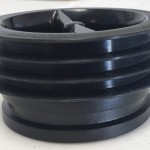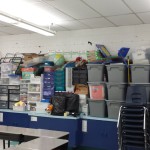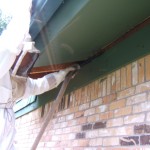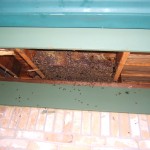Summer is time for deep cleaning at your school
It is that time of year, summer! When the students and teachers leave, and school districts across the state are systematically deep cleaning their school campuses. As custodial and maintenance staff work through your campuses here are a few things to remember.
The pests we generally see in schools during the summer months include cockroaches, mice, spiders, ants, silverfish, and occasionally crickets. These pests are animals and they like the same things we do, food, water, harborage and safety. Summertime is a great time for these pests to proliferate, or be found as your staff progresses through their cleaning routines.
Places that provide the necessities for pest survival are what we term pest vulnerable areas (PVA). Each of these areas should be thoroughly inspected and cleaned during the summer break. Areas that need special attention include the kitchen and cafeteria, faculty lounge, custodial storage areas, science classrooms, art centers, special needs classrooms, kindergarten and daycare classrooms, locker rooms, home economics classrooms and other reported pest “hot spots.” IPM coordinators this is the best time to investigate that classroom, building or other area that you have been fighting all school year.
The kitchen and cafeteria will require some deep cleaning. Floor drains should be cleaned with a microbial scum digester and all equipment and floors, especially corners

Installing a trap guard to floor drains can help reduce cockroaches and flies coming up through the floor drains
and around furniture legs should be degreased. Don’t forget that walls and light fixtures should also be cleaned. Consider installing a specialized gasket to help keep organic matter down and also aid against American cockroaches crawling out of the floor drains during the summer months. I recently saw this “Green Drain” installed at a school district; I was told that by installing these devices they saw a dramatic decrease in their American Cockroach population in the school kitchens over the summer.
In the teacher’s lounge, check refrigerator seals, clean inside and under the microwave, behind and around soda machines and under sinks. These are excellent places to harbor pests. Also, be sure to clean any pest droppings you find. Droppings are difficult to age, and the pest manager won’t be able to conclude whether the infestation is old or new, unless they know that the area has been thoroughly cleaned. If the lounge or other areas in the campus has furniture like couches and chairs, be sure to remove the cushions and clean in all the cracks and crevices, remember insects only need a crumb to be full.
How about classrooms? Clutter, candy and improper storage are a pests best hiding place and feeding station. Upholstered furniture is a pest haven. By reducing clutter, the jobs of the sanitarian and the pest manager become easier. This is a perfect time to reduce your cardboard load and make a switch to plastic storage containers. Remember your local Wal-Mart, Target, Lowes, Home Depot and other retail stores often have small grants for school districts, this a perfect way to pick up more storage containers for teachers and staff to use to store then classroom supplies.
If you come across any live pests while cleaning, be sure to record what type and where on the pest sighting log. Make sure your staff turns in the proper work orders to report areas where pests can enter the building. The time to make these improvements is now while you can install a new door sweep, fix a window leak, or remove vegetation too close to the building.
Bees in Buildings By Dr. Mike Merchant
Everyone knows bees are our friends. They pollinate flowers, increase crop yields, and make honey. But bees are definitely not our friends when they move into a school building. Don’t make the mistake of ignoring a bee colony that has taken up residence in one of your school’s buildings.
In addition to the hazard posed by bees to students and school staff, established bee nests can create unexpected problems. Large abandoned or exterminated nests will leak honey and become infested with many different types of insect and rodent scavengers. Abandoned bee nests can become a source of odors as the honey begins to ferment and leak into ceilings or wall voids.
If you are called upon to deal with a bee nest in a building, keep these points in mind:
- Bees around a hive can sting without warning and with little provocation.
- Bee control should be attempted only by trained and experienced professionals. A beekeeper or pest control professional are your best options when you need bees removed.
- Do not simply caulk up a bee nest entrance. This makes control more difficult and may force the bees indoors.
- In addition to killing or removing the bees, the nest MUST be removed. Failure to remove the nest, honey and any dead bees can result in odor and insect problems later.
- The longer a bee hive is permitted to exist in a building, the larger it will get and the more difficult it will be to remove.
- Bees move into a structure ready to build a nest. A nest weighing several pounds will be constructed in a matter of days.
- Keep children and others at least 20 feet away from a known bee nest. A wider zone may be prudent if you live in areas known to be inhabited by Africanized honey bees.
- For more information about bees and swarm control, visit the Insects in the City website




 .
.